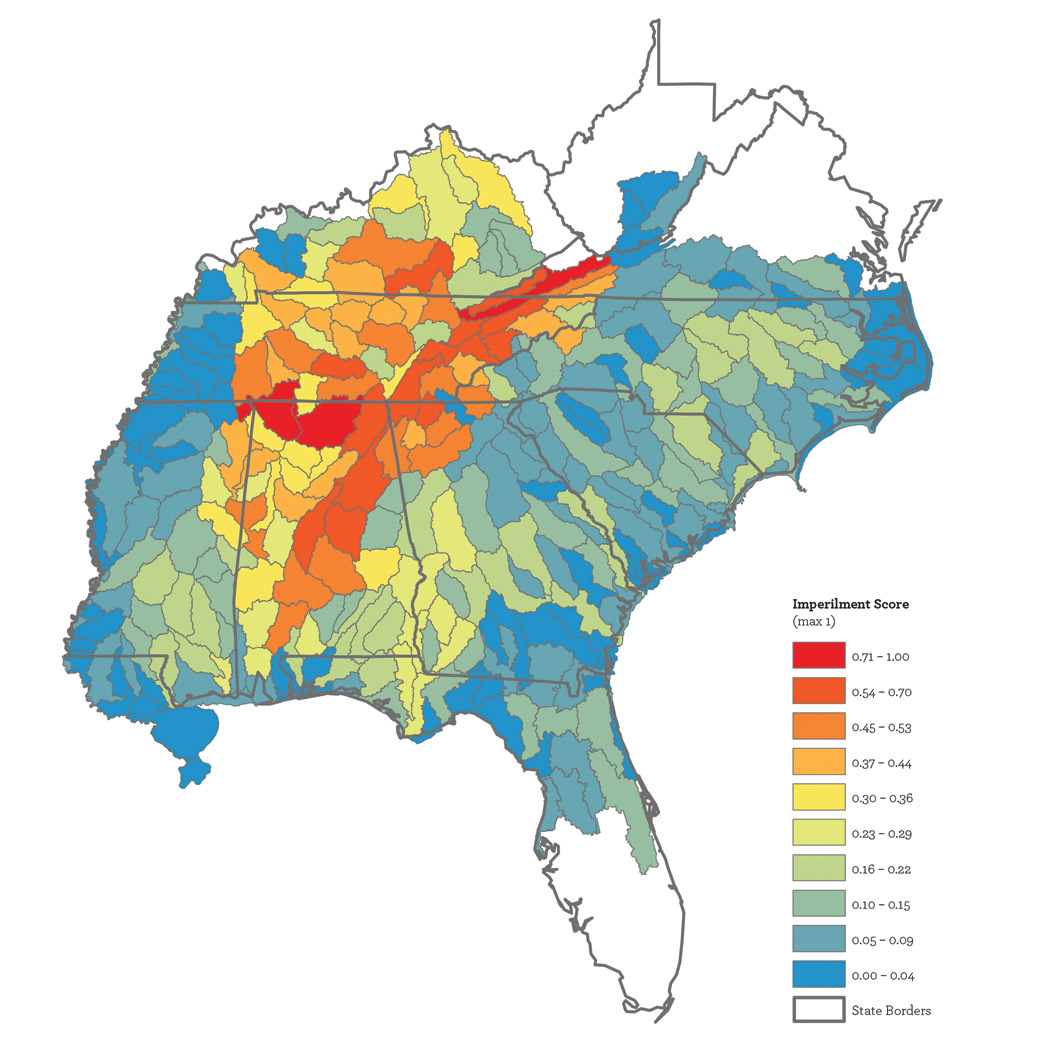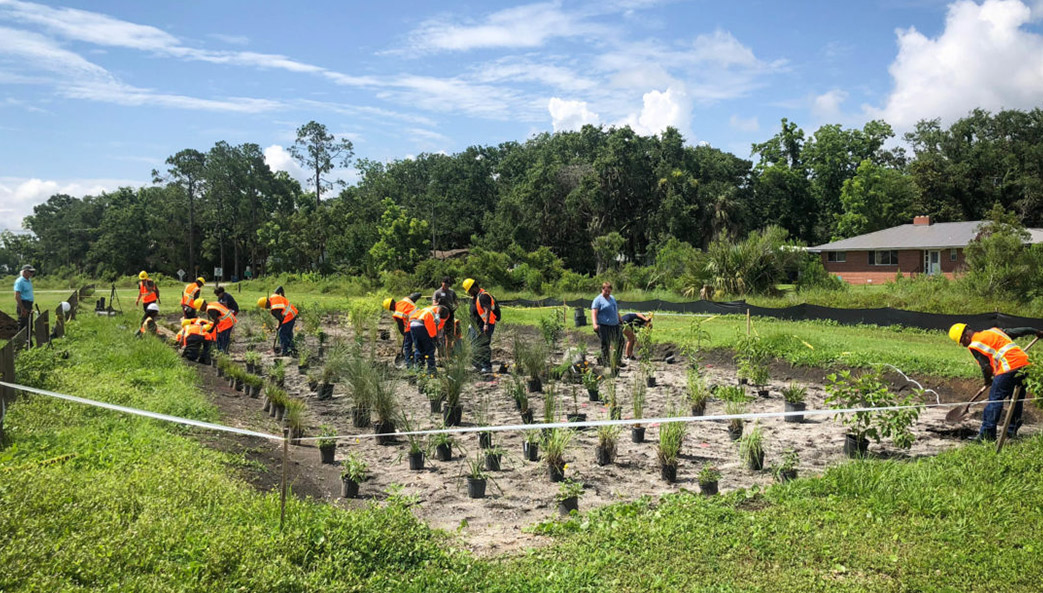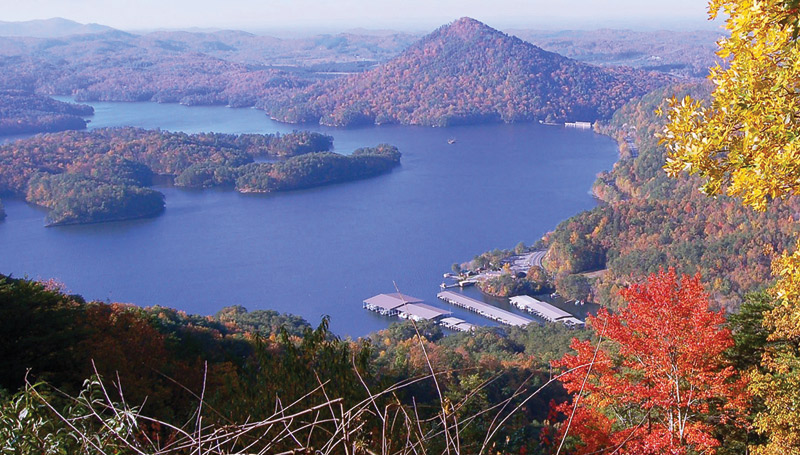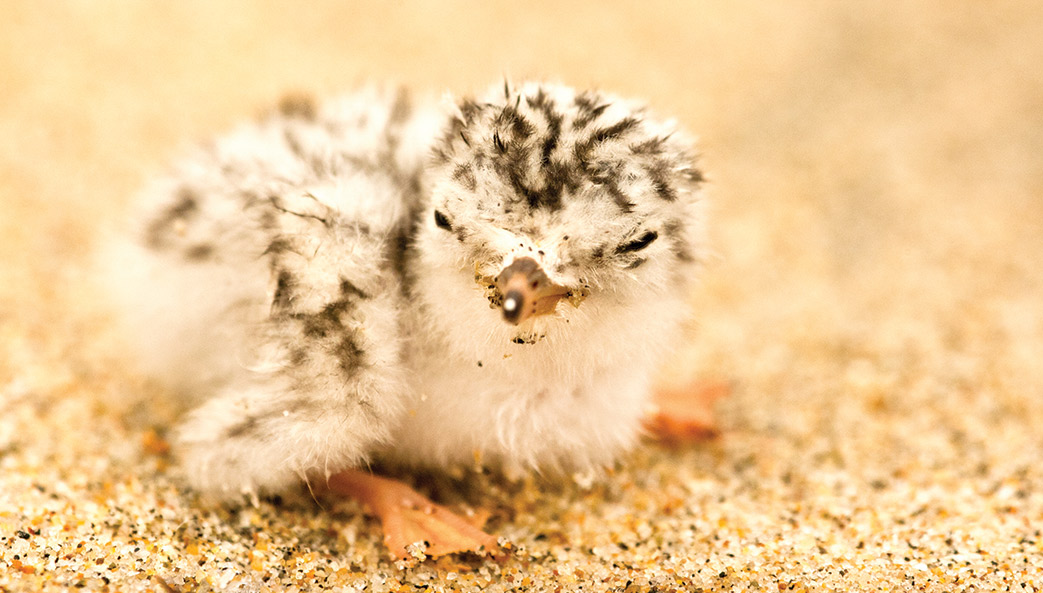After more than a year of data collection, analysis and mapping, the UGA River Basin Center (RBC) and the Tennessee Aquarium Conservation Institute (TACI) have published a comprehensive survey of southeastern watersheds and the diverse aquatic wildlife that live in these freshwater ecosystems.
The study’s creators say it should serve as a master plan to guide research and conservation work that will ensure the long-term survival of these waterways, which have suffered from intensive human development.
“Rivers and streams in the United States are the arteries that carry precious flows through our landscape,” said TACI director Anna George, “and they provide a measure of the health of that landscape.
“Right now,” she said, “those rivers are not unlike cardiac patients. What we’re doing in this study is ‘visiting the doctor’ to learn how to take better care of the health of our rivers. We’ve identified some of the most important places to start making changes in our habits and taking better care of our waters.”
Scientists scored each watershed based on three characteristics: the number of species it contains, the conservation status of those species, and their geographic distributions. Areas containing a greater variety of species, large numbers of endangered or threatened species, or species found in few or no other locations were ranked higher.
According to the study, the 10 highest-priority watersheds are:
- Pickwick Lake in middle Tennessee and northern Alabama
- Wheeler Lake in middle Tennessee and northern Alabama
- Cahaba in central Alabama
- Upper Clinch in northeast Tennessee and southwest Virginia
- Middle Coosa in northeast Alabama
- Lower Duck in middle Tennessee
- Conasauga in southeast Tennessee and northwest Georgia
- Lower Coosa in central Alabama
- Etowah in northwest Georgia
- Caney in middle Tennessee
“The Southeast’s rich aquatic communities are globally significant,” said Duncan Elkins, the study’s coordinator and a postdoctoral research associate at the RBC, based in the UGA Odum School of Ecology. “There’s nothing like our biodiversity anywhere else on the continent or anywhere else in the temperate world.”
More than a quarter of the species included in the study are unique to the region, and some of them are struggling. Twenty-eight percent of southeastern fish species, for example, are considered imperiled, a figure that has more than doubled in the last 20 years.
The publication of the RBC and TACI study, which was funded by a National Fish and Wildlife Foundation grant, comes at a crucial time for southeastern aquatic ecosystems.
Until now, efforts to study and safeguard freshwater species in the region have struggled because of anemic funding and a lack of federally protected lands, especially compared to less-diverse regions such as the western United States.
The Southeast has an incredible number of species, and it’s really important that we focus our attention on where we can get the biggest bang for the buck,” George said. “Our project has allowed us to identify, across the Southeast, the locations of those places that are so critically important for our water and wildlife.”







